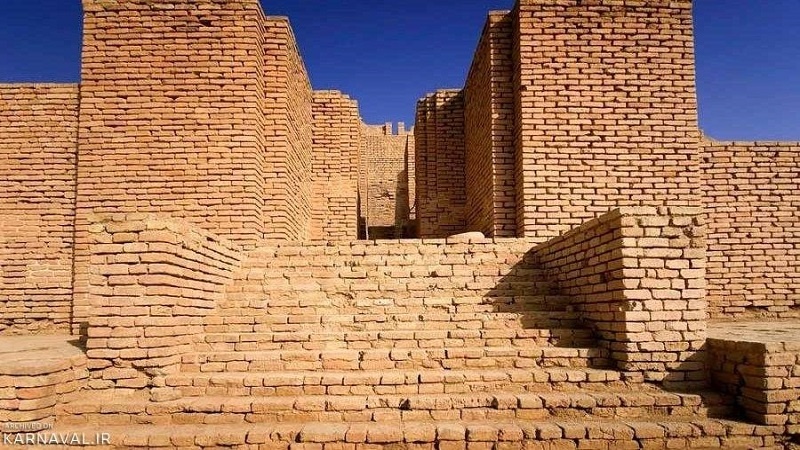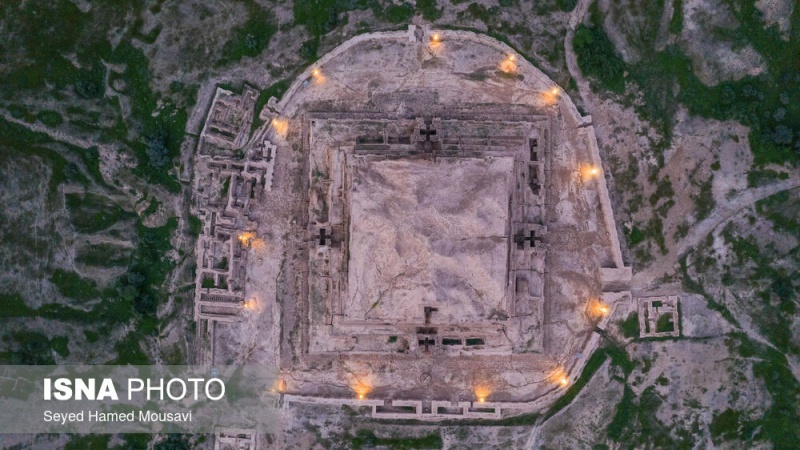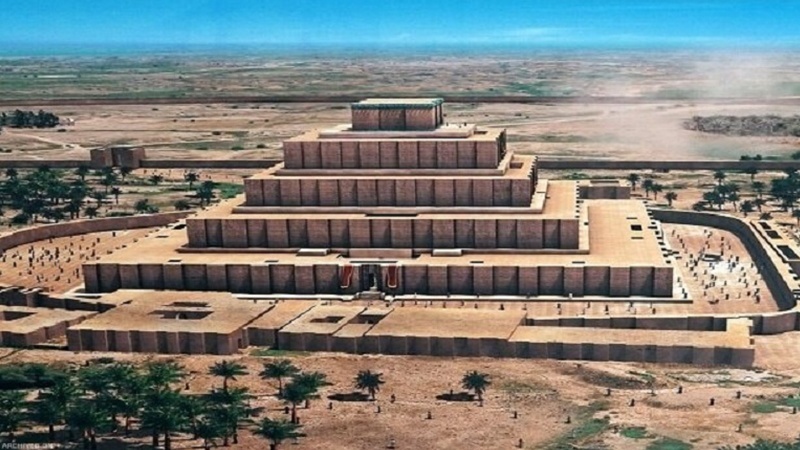8 amazing features of architecture of world's oldest ziggurat in Iran + Photos
Pars Today- The ancient and mysterious “Chogha Zanbil” place of worship in Shush (Susa), Southwestern Iran, which is also known as Chogha Zanbil Ziggurat, was built more than 3 thousand years ago.
Chogha Zanbil Ziggurat consists of three words; “Ziggurat” means going up to the sky. In ancient civilizations, places for worshiping gods were built which their most important and valuable ones were called ziggurat.
The word Chogha Zanbil also consists of two parts; "Chogha" means hill and "Zanbil" means basket. It seems that before the excavation of the temple, its hill- like ruins resembled an overturned basket.

In this article, we take a look at 8 amazing points about Chogha Zanbil Ziggurat, which is a spectacular example of architecture and an ancient settlement of Iranian people:
1. It’s more than three thousand years old
One of the famous kings of the Elamite Empire named Untash-Gal, in 1250 BC ordered the construction of a religious and royal city called Duravantash near the Dez River and the ancient city of Shush (Susa).
Chogha Zanbil was destroyed in 640 BC, by the order of Ashurbanipal, the King of Assyrians in the war with Humban-haltash, the last King of Elam. There is an inscription which says: "I broke the Ziggurat of Susa, which was made of bricks glazed with lapis lazuli stone... I razed the temples of Elam to the ground... I turned Susa into a ruin... The human call and the cry of joy left there by me… “

2. It’s the largest ziggurat in the world
Chogha Zanbil is the largest ziggurat in the world. This structure was registered in the World Heritage List by UNESCO in 1979. Chogha Zanbil Ziggurat is still the largest and most important surviving building from the ancient Elamite period.

3. It has a unique architecture
Chogha Zanbil Ziggurat was built with sides of 105 × 105 meters and an approximate height of 53 meters from the ground. However, today only 25 meters of it remains which consists of three nested adobe fences. In the middle of the first fence, the main temple which was called ziggurat, is located. In the second fence, there are palaces and small temples, and in the third fence, there are the Chogha Zanbil water treatment plant, palaces and royal underground tombs.

4. It has the oldest tiles in the world
The main materials used in the ancient Ziggurat of Chogha Zanbil are adobe and mud. Also, in order to protect the erosion of the adobe used in the building, a brick-coating has been used. About 6500 bricks in this coating have writings in Elamite script. The bricks are not sealed and each one of them is written separately by hand. Some of the bricks used in Chogha Zanbil are glazed and some have decorations like studs, which are among the oldest tiles in the world.

5. It has applied earthquake-resistant engineering
Chogha Zanbil Ziggurat is considered as one of the miracles of Iranian architecture. The construction of the ziggurat was completed in two stages; First, they considered a very large foundation to build this huge temple. Then they put different floors on it. This foundation has been standing for more than 3 thousand years. In this adobe building, there is no Japanese earthquake-proof hydraulic jack! But after hundreds of terrible earthquakes, this structure hasn't been seriously damaged. This issue can be considered as one of the strange engineering secrets of Chogha Zanbil Ziggurat.

6. It has one of the oldest water treatment plants in the world
Water treatment plant in Chogha Zanbil is considered as one of the oldest water treatment plants in the world, which is unique in its kind for that period. Although the Dez River was only three kilometers away from the temple, Elamite engineers dug an open waterway from the Karkheh River for a distance of fifty kilometers to the large reservoir in the northwest of Chogha Zanbil, outside the third fence of the city, and constructed a water treatment plant with a capacity of 350 cubic meters of water made of bricks, Sarooj (a traditional water-resistant mortar used in Iranian architecture), and lime. When the large tank was filled with water up to the edge of the end wall, after the mud settled, the water was purified and poured into the pond inside the fence through the aforementioned openings.

7. It has applied flood- proofing engineering
Rainwater in Chogha Zanbil Ziggurat is directed outside with horizontal and vertical brick channels. These waterways went down vertically at a depth of 85 cm, and at the bottom, they became a horizontal vaulted waterway and then joined an open waterway on the lower floor level.
In order to prevent the vertical fall of water and the erosion of bricks and brick stairs, a waterway- at the place where the angle changes- was built. On each of the four faces of the first floor of the ziggurat, there are five gutters. Four gutters used to collect the water of the floors and the fifth gutter collected the water of the stairs, which prevented from flooding.

8. It has a brick solar calendar
In the main area of Chogha Zanbil Ziggurat, there are three brick buildings built in a circular shape, and data shows that they look like a sundial. These buildings together formed a single complex; in fact, it was an observatory or solar calendar for calculating the year and calendar and recognizing the first and middle days of each season.

AE/UR



